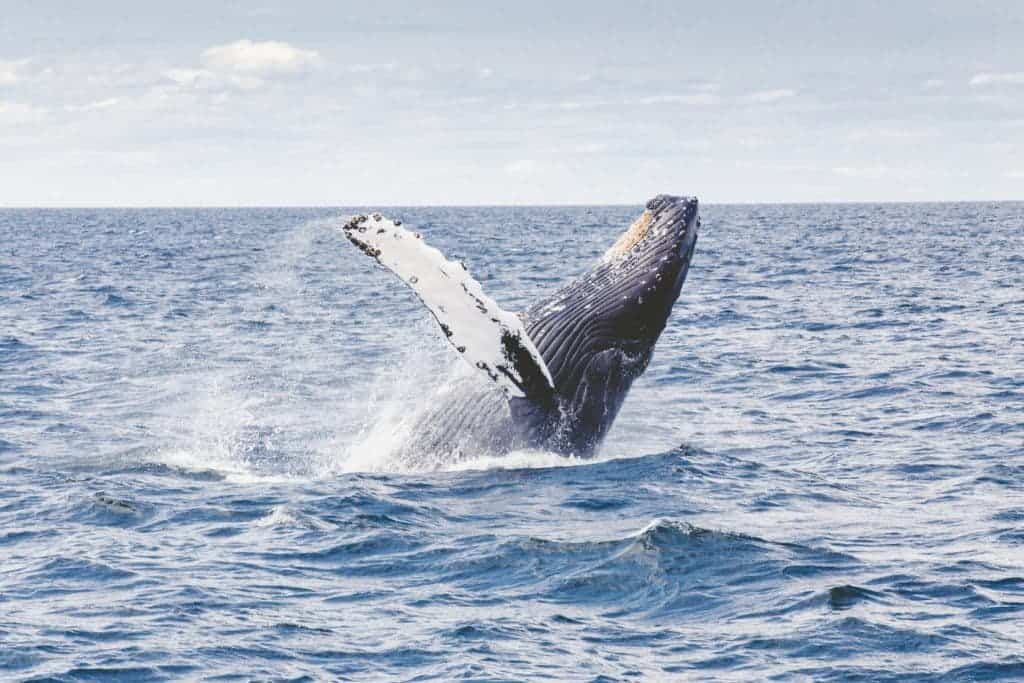Researchers at Stanford University have made the first recording of a wild blue whale’s heart rate to date. The data suggests that the animals’ hearts are operating close to their maximum capacity, which may act as a hard cap on their maximum possible size.

The team developed a sensor array which, through the use of four suction cups, can be secured near a whale’s left flipper. This device was used to record the heart rate of a wild blue whale, and offer an explanation as to why they are the largest animal we’ve ever found. The recording points to some unusual features that help whale hearts pump enough blood.
Studying animals that operate “at physiological extremes” can help us better understand biological limits on size, the team explains. Furthermore, such species may also be “particularly susceptible” to environmental changes that disrupt their food supply, since large animals need large meals. All in all, the team hopes that their research will help us design new and better conservation and management schemes for endangered species like blue whales.
Big-hearted
“We had no idea that this would work and we were skeptical even when we saw the initial data. With a very keen eye, Paul Ponganis — our collaborator from the Scripps Institution of Oceanography [Ed. Note also a co-authror of this study] — found the first heart beats,” said Jeremy Goldbogen, assistant professor of biology in the School of Humanities Sciences at Stanford and lead author of the paper.
“There were a lot of high fives and victory laps around the lab.”
The current study draws its roots in some of Goldbogen’s and Ponganis’ previous research, in which they measured the heart rates of diving emperor penguins in McMurdo Sound, Antarctica. The duo wanted to do the same with a blue whale, but there were several issues to overcome: “finding a blue whale, getting the tag in just the right location on the whale, good contact with the whale’s skin and, of course, making sure the tag is working and recording data,” said Goldbogen.
They first tested their sensors on smaller, captive whales, to make sure the technology is sound. However, they didn’t accurately reflect the behavior of wild whales — which aren’t, for example, trained to flip belly-up for a human caretaker. Blue whales also have a wrinkly structure to the skin on their underside that expands during feeding; this could mechanically dislodge the sensor array.
“We had to put these tags out without really knowing whether or not they were going to work,” recalled David Cade, a recent graduate of the Goldbogen Lab who is a co-author of the paper and who placed the tag on the whale.
“The only way to do it was to try it. So we did our best.”
Despite all this, everything went swimmingly with the wild whales, the team reports. Cade managed to fix the tag on his first attempt near the flipper (where it could pick up on signals from the heart).
The recordings showed that when the whale dives, its heart rate slows down to an average of about 4 to 8 beats per minute, although the team did see activity drop down to just 2 beats per minute. At the lowest point of their foraging dives — when the whale needs to swim upwards and catch its prey — heart rate rose to 2.5 times above this minimum value, and then slowly decreased. The highest heart rate was recorded at the surface, between 25 to 37 beats per minute, while the whale was breathing and replenishing its oxygen stocks.
All in all, the team says the findings are very surprising. The upper limit of heart rate was faster than expected, and the lowest ones were about 30-50% slower. The lower-end heart rates seen can be explained by the whale’s elastic aortic arch, which slowly contracts and keeps blood flowing to the body between heartbeats. The highest heart rates seen are likely made possible by small features of the heart’s shape and movement which prevent pressure waves generated during contraction from disrupting blood flow, the team adds.
The blue whale’s heart likely operates near or at the limit of its capacity. The team believes that the energy needs of a larger body would simply outpace the ability of a heart to pump blood, which would explain why no animal has ever outgrown them.
Currently, the team working on improving their sensor array and plan to expand their research to other species such as fin whales, humpbacks and minke whales.
The paper “Extreme bradycardia and tachycardia in the world’s largest animal” has been published in the journal PNAS.






